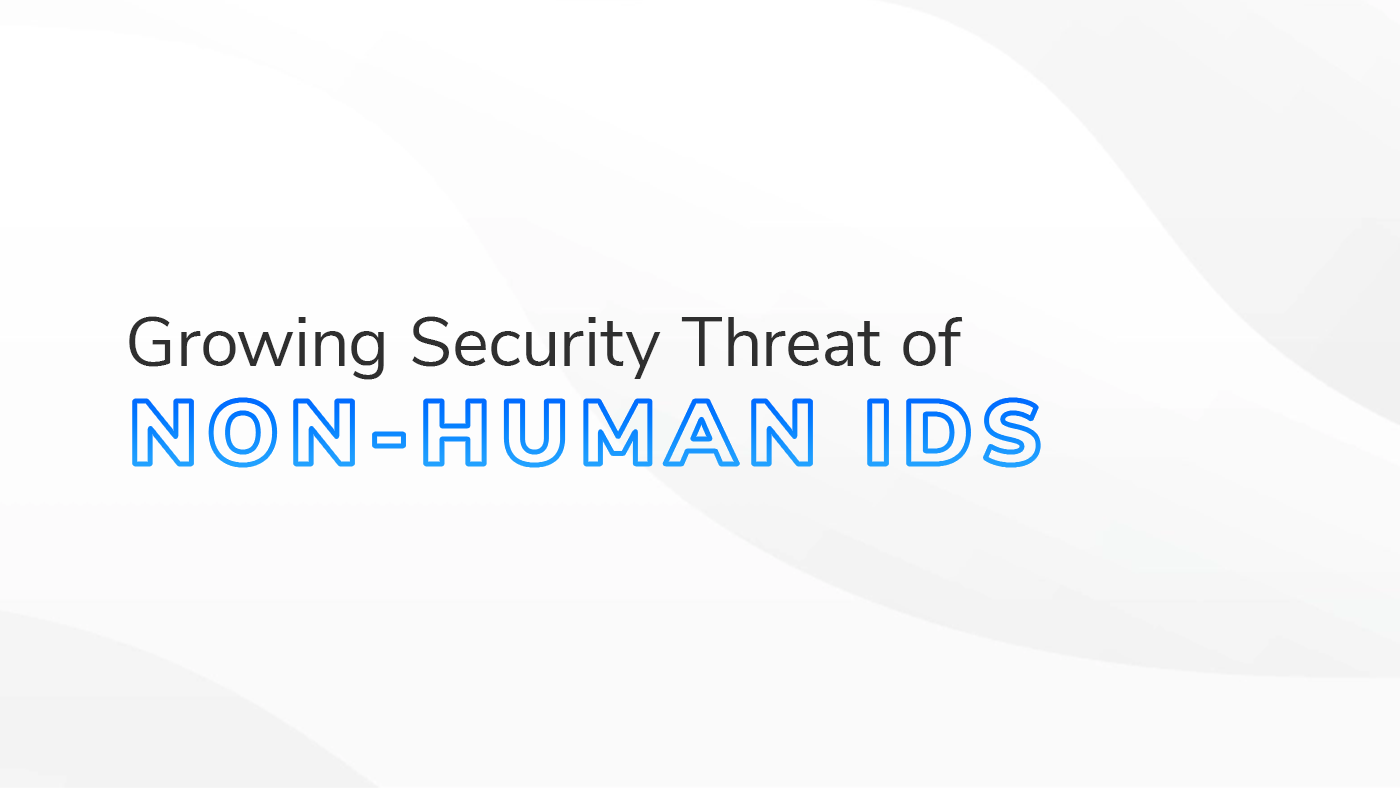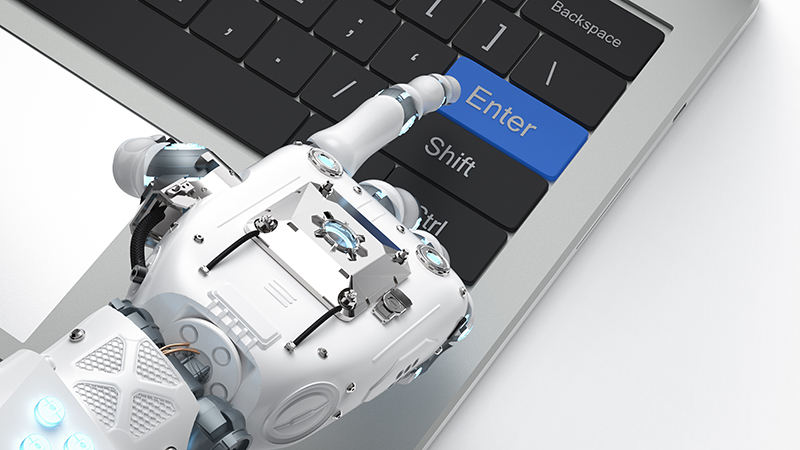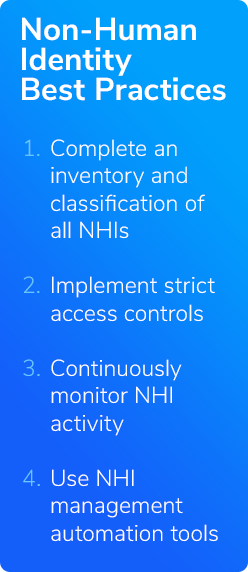The Wild West of Non-Human Identity Security
- Written by: Ryan Mosher

Managing user accounts is an integral part of daily IT administration in any organization. Your employees’ accounts are the doorways into your organization’s data vault, and considerable time and effort are spent securing those accounts.
But for most organizations, there is a garage door that is 10x-50x bigger, is open constantly, rarely checked for problems, and is the fastest-growing part of your identity attack surface: non-human identities.
Today, a vast army of non-human identities (NHIs)— from service accounts to ever-growing networks of internet-connected devices (IoT)—are constantly working behind the scenes. These digital entities automate critical processes, keeping our applications running smoothly and our businesses humming.
However, the very nature of non-human identities, designed to operate without constant human oversight, creates a significant security challenge. Each identity represents a potential back—or garage—door into your system, a vulnerability that cybercriminals can exploit to steal data, disrupt operations, or launch devastating attacks.
The good news? You're not powerless. By understanding the growing importance of non-human identity management and implementing proper security measures, you can keep your digital workforce in check and protect your systems from harm.
This article will explore the risks non-human identities present and the solutions available to secure them effectively.

What Are Non-Human Identities?
Non-human identities aren't actual people, but they are essential players in the digital world. They handle tasks that applications or systems need to perform without requiring a human to constantly log in and out.
Here's a breakdown of the different types:
- Service Accounts: These act like workhorses, automating tasks and keeping things running smoothly in the background. Server accounts have access to resources other accounts might not be able to access, but their access is restricted to specific purposes.
- Application Accounts: Think of these as specialists. Each application might have its own account to access specific data or resources it needs to function.
- System Accounts: These are administrative-level accounts used to keep systems and services running. Think of them as the administrators with the master key.
- Machine Identities: These are the digital IDs of various devices and programs, like smart speakers and industrial controls, that quietly run the show.
While non-human identities are instrumental, they also come with a significant security risk. If someone gains unauthorized access to these accounts, they could wreak havoc on your system. That's why proper security measures are crucial.
Why Non-Human Identities are a Growing Security Threat
The more non-human identities you have, the bigger the target on your back for attackers. The larger your garage door, the more chances someone could sneak through.
This isn't just a theoretical risk. Real-world attacks prove how dangerous compromised non-human identities can be. Hackers have exploited these NHIs to steal sensitive data and cause major financial damage. Just one breach can cost millions.
Non-human identities are incredibly attractive to attackers for a variety of reasons:
- They often have high-level access: Remember those “administrator” system accounts? In the wrong hands, they can be used to access and manipulate critical systems.
- They might fly under the radar: Unlike human accounts, NHIs can operate silently in the background. It's easier for attackers to hide their activity using these accounts.
- Many organizations lack proper security measures: Because non-human identities are often overlooked, they might not be secured as tightly as human accounts. This creates a vulnerability that attackers can exploit.

Challenges in Managing Non-Human Identities
Trying to manage non-human identities securely is like trying to manage a room full of robots, all with different jobs and security clearances. Here's why keeping them under control can be a real challenge:
- Sheer Numbers: These things multiply like gremlins after a midnight snack. Organizations can have thousands of non-human identities, making it a nightmare to track who's doing what and where.
- Blind Spots Everywhere: Non-human identities often operate in the shadows. Many organizations lack the tools to see exactly how many NHIs they have, where they're used, and what they're accessing.
- Outdated Security: Traditional security systems were built for humans, not robots. They struggle to keep track of the unique needs and permissions of non-human identities.
Best Practices for Non-Human Identity Security
You need clear rules, constant vigilance, and a little automation muscle to practice good non-human identity security. Take a look at this battle plan to protect your non-human workforce:

Step 1: Know Your Army - Inventory and Classification
First things first, you have to know who you're working with. Conduct a total headcount. This means creating a complete inventory of all your non-human identities, from lowly service accounts to high-powered system accounts. Don't stop there, though. Classify them by risk and importance. Are they accessing critical data? Do they have broad system access?
Step 2: Draw the Lines - Access Controls
Just like in any good army, clear lines of authority are essential. Implement strict access controls for your non-human identities. Remember the principle of least privilege: grant only the access they absolutely need to do their jobs.
Step 3: Constant Patrols - Continuous Monitoring
Don't let your guard down. Continuously monitor the activity of your non-human identities. Look for any anomalies or suspicious behavior.
Step 4: Automate the Drills - Automation and Orchestration
Managing a large army can be a lot of work. That's where automation comes in. Use automation tools to streamline the management of your non-human identities. This could involve automating tasks like provisioning, rotation of credentials, and access control enforcement.
Winning the Non-Human Identity Security Battle
As non-human identities evolve, the way we manage non-human identities needs to evolve along with them. While emerging trends like AI-powered security and blockchain offer exciting possibilities, the foundation of strong non-human identity security should always remain the same.
We encourage you not to wait for an identity management failure but to secure all your identities—both human and non-human—today and stay ahead of the curve.
At HBS, we understand the challenges of non-human identity security. Our team of experts can help you assess your current processes, implement best practices, and explore innovative and custom solutions that will fit your organization.
Contact HBS today to learn more and take the first step towards a more secure digital future.







